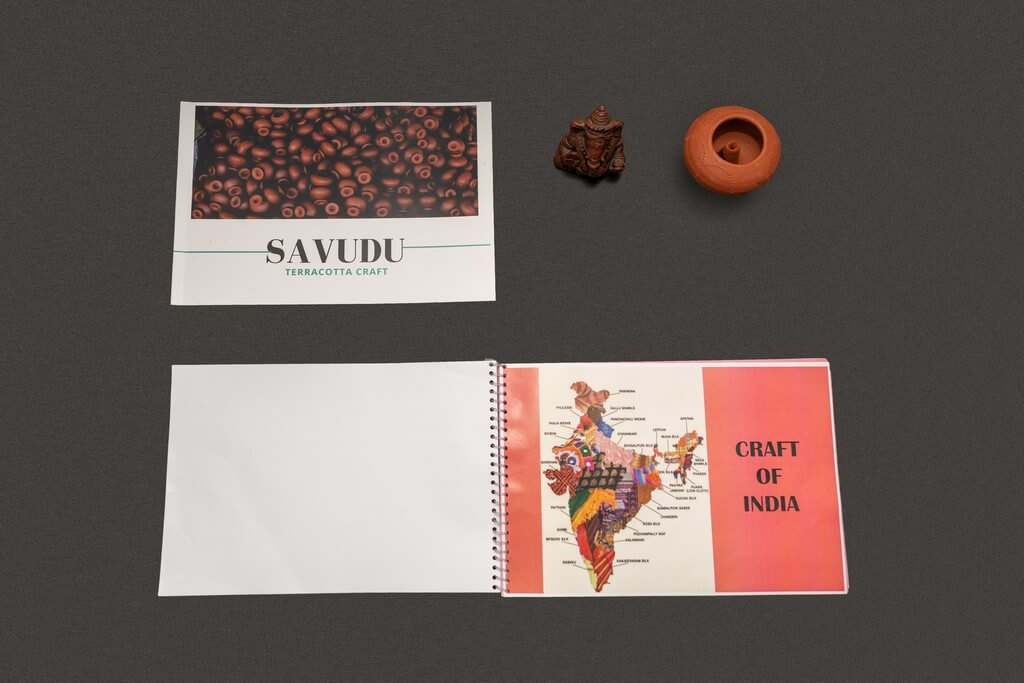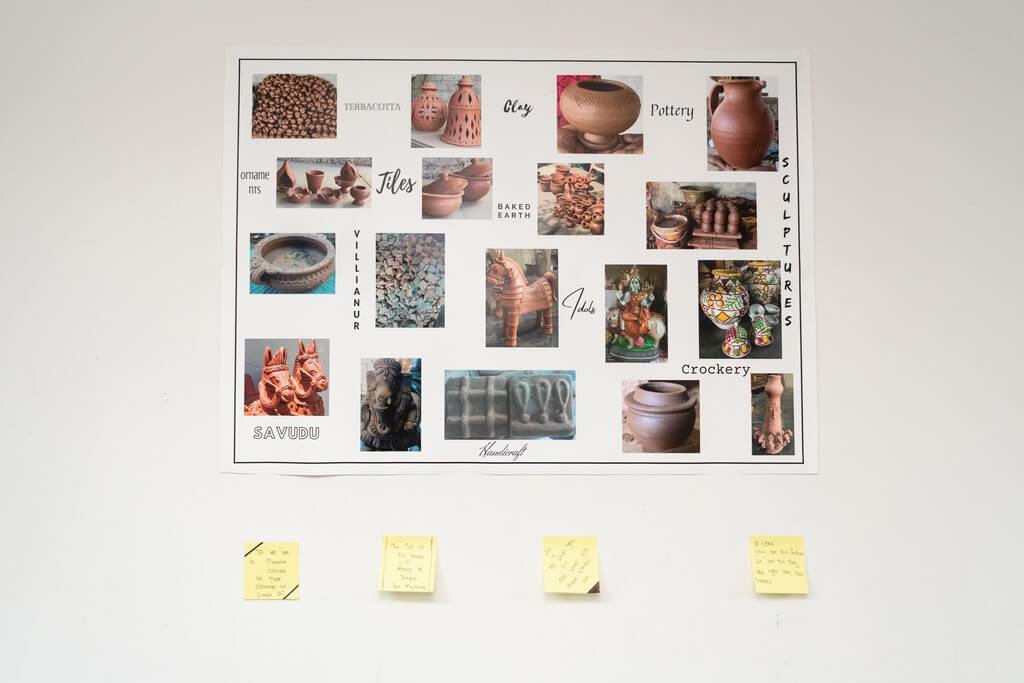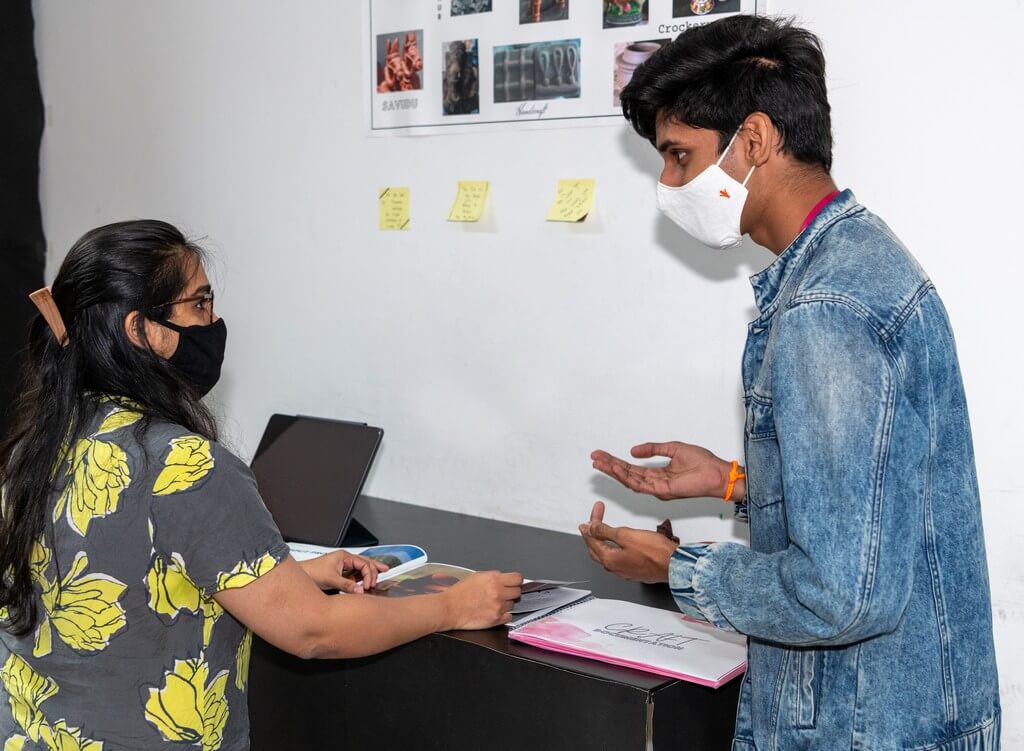Terracotta crafts
20/04/2021 2021-04-20 10:57Terracotta crafts
Terracotta is a practice that is not widely known much in Indian craft. Realising its ancient history, design potential and capability as an artistic practice, Rudra Purna Kaleswara Rao from JD Institute of Fashion Technology, Bengaluru’s Post Graduate Diploma in Fashion Design and Business Management (PGDFDBM) 2019 batch was inspired to study this as part of his craft documentation series. Identifying terracotta craft cluster in and around Pondicherry such as Auroville, Alankuppam and Villanur, Purna visited these places and studied the craft and its practice from the artisans directly.

Terracotta is reddish-brown clay that is low-fired or earth-baked, used as an ornamental building material or in sculpture. It is usually made by moulding clay into desired shapes and burning them. As part of his field visit, Purna learnt the process in which they make terracotta objects and the cultural history that informs its practice. Being a practice that is carried out by generations, the terracotta artisans are inspired by Hindu mythology to create idols and sculpture, as well as other commercial products such as plates, jewellery and home decoration objects. Having recognised its importance, the local government funds the artisans with raw materials and supplies. Mixing three kinds of sand together — soft clay (kalippu), mud (savudu), and sand (manal) — to form the terracotta clay, the artisans create their desired shape by hand and dry it under the sun during summers or fire it during winters. Taking 2-3 days or weeks to dry, depending on the scale of the object, the products are sold directly to customers, with the large-scale objects being customised products.

Terracotta craft finds itself in demand mostly for decoration purposes or to create large-scale sculpture for public spaces. As the pandemic has affected many craft practices, it has impacted the terracotta craft of Pondicherry in terms of its demand and supply, with the artisans not being able to get much orders or their inability to sell many products. However, visiting the craft cluster enabled Purna to understand how terracotta artisans work and create these clay products and the processes involved in its making, inspiring him to work with terracotta himself.














